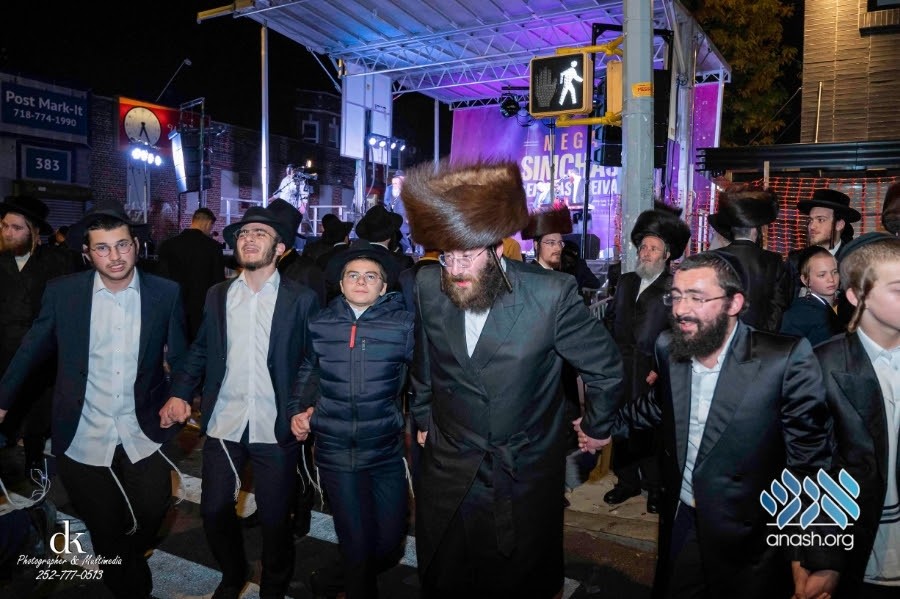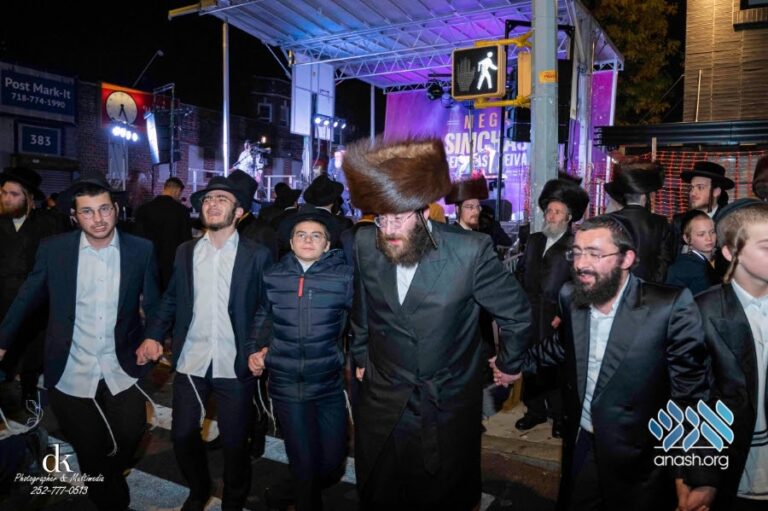י״ז תשרי ה׳תשפ״ד | October 1, 2023
They Knew How to Breakdance, and They Danced in a Circle
Article by Rabbi Mordechai Lipskier: Breakdancing and disco dancing are full of self. Dancing in a circle demonstrates togetherness. These bachurim knew that while breakdancing will attract attention, the circle is really what it’s all about.

Breakdancing and disco dancing are full of self. Dancing in a circle demonstrates togetherness. These bachurim knew that while breakdancing will attract attention, the circle is really what it’s all about.
By Rabbi Mordechai Lipskier – The Beis Medrash
“Hey Grandma, I want to show you something!” Grandma sits in her rocking chair as her teenage grandson turns on blasting music and starts dancing. He finishes his moves and proudly announces: “That, Grandma, is called disco.”
His grandmother looks at her grandson with pity: “Do they know what causes it?”
The Rambam writes[1] that although all Yamim Tovim are a time for joy, Sukkosthere is a special emphasis on joy because of simchas beis hashoeivah, the celebration surrounding the drawing of the water to be poured on the mizbeach. “Those who could sing would sing. They would dance and clap their hands, letting loose and whistling, each individual in the manner which he knew. Hashem was praised in speech and song.”
Dancing is a universal expression of joy, and yet, the Yidden have always had their unique styles of dancing. One of our signature styles is the circle.
Regarding hilchos Shabbos, there’s a big difference between a private domain (reshus hayachid) and a public domain (reshus harabim). One may carry as one pleases in a reshus hayachid but one may not carry in a reshus harabim. There are, however, methods of sectioning off a reshus harabim with barriers giving it the status of a reshus hayachid.
These barriers can even be comprised of human beings. A group of people standing in a tight circle transforms the space in the middle to a reshus hayachid.
The circular dance actually captures the core of everything we do as Yidden.
The world was created as a public domain. It’s not readily noticeable that the world has a Supreme Owner and Creator. A person can live their entire life R”l without acknowledging that everything is Hashem’s. This results in the world and its creatures feeling independent. This sense of independence can lead to divisiveness amongst people, and separation from Hashem.
The Yid’s job is to transform this public domain into a domain for Hashem, a true reshus hayachid, a domain for the One and Only. Every item we use for a mitzvah is transported to Hashem’s domain. Every food we eat according to halachah is incorporated into Hashem’s reshus.
We have the ability to run circles around everything in this world and encircle it in Hashem’s Oneness.
Dancing in a circle also highlights unity among people.
A few years ago, a group of Lubavitcher bachurim were doing mivtza’im on a busy city street with MBD’s “Moshiach” song blaring in the background. Before long, a group of talented goyim lined the street, breakdancing to the Jewish music. Not to be outdone, the bachurim wowed the crowd, also “breakdancing” with perfect choreography. A video of this went viral. But I think the most incredible part of the video is the very last few seconds. After the bachurim did their dance, they instinctively, without any prompt, grabbed each other and danced in a circle.
Breakdancing and disco dancing are full of self. Dancing in a circle demonstrates togetherness.
These bachurim instinctively knew that while breakdancing will attract attention, the circle is really what it’s all about. Our job is to fix the world. We do it by holding hands with another Yid.
When our lives are centered around this ideal, it’s no wonder we can always find reason for joy!
The Rambam on hilchos lulav concludes with these powerful words:
Whoever holds himself proud, giving himself honor, and acts haughtily in such situations is a sinner and a fool […]
[In contrast,] anyone who lowers himself and thinks lightly of his person in these situations is [truly] a great person, worthy of honor, who serves G-d out of love. Thus, David, King of Israel, declared: “I will hold myself even more lightly esteemed than this and be humble in my eyes,” because there is no greatness or honor other than celebrating before G-d, as it states: “King David was dancing wildly and whistling before G-d.”
May we all experience true joy and togetherness, and may we merit very soon to sit in the Sukkah made of the Livyasan.[2]
[1] Rambam at the conclusion of Hilchos Lulav
[2] Based on the sicha of the sixth night of Sukkos 5781 (1980)
Please consider making a donation to help us continue to produce these divrei Torah.
Subscribe to receive weekly divrei Torah by Rabbi Lipskier:
Email: [email protected] (Articles only)
WhatsApp: 347-620-2063 (Articles and videos)


Thank you for writing this important point. I would extend this awareness to weddings as well…